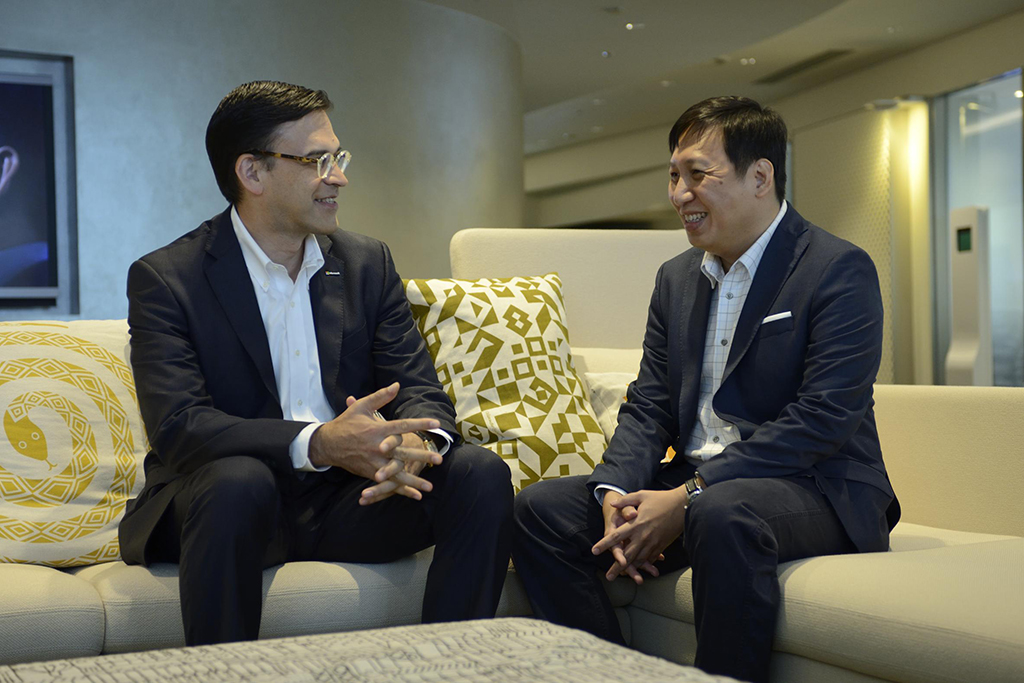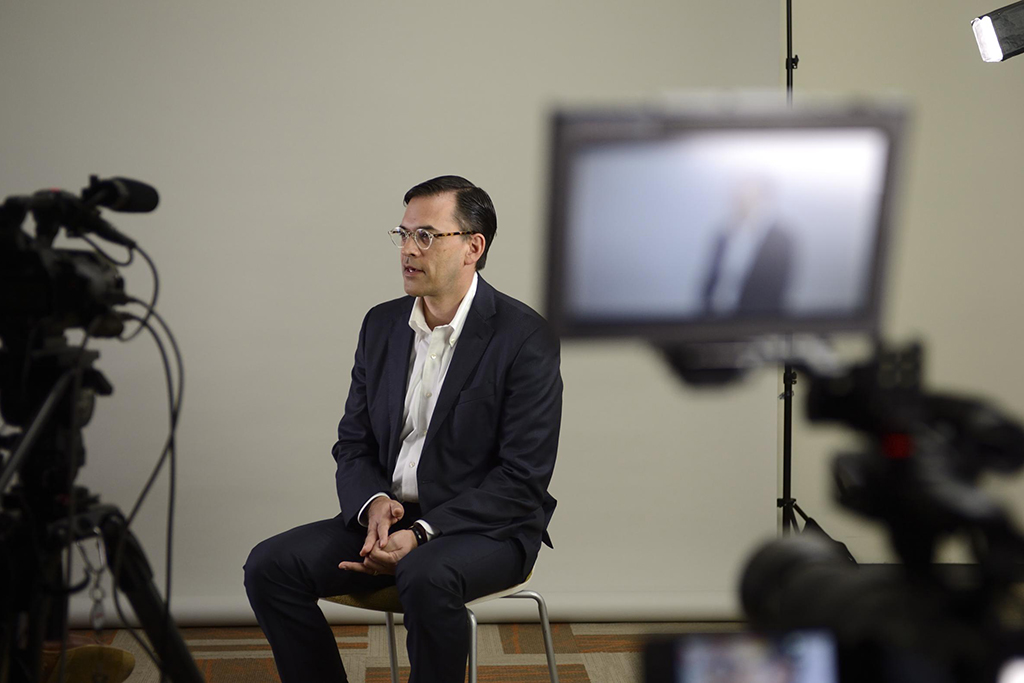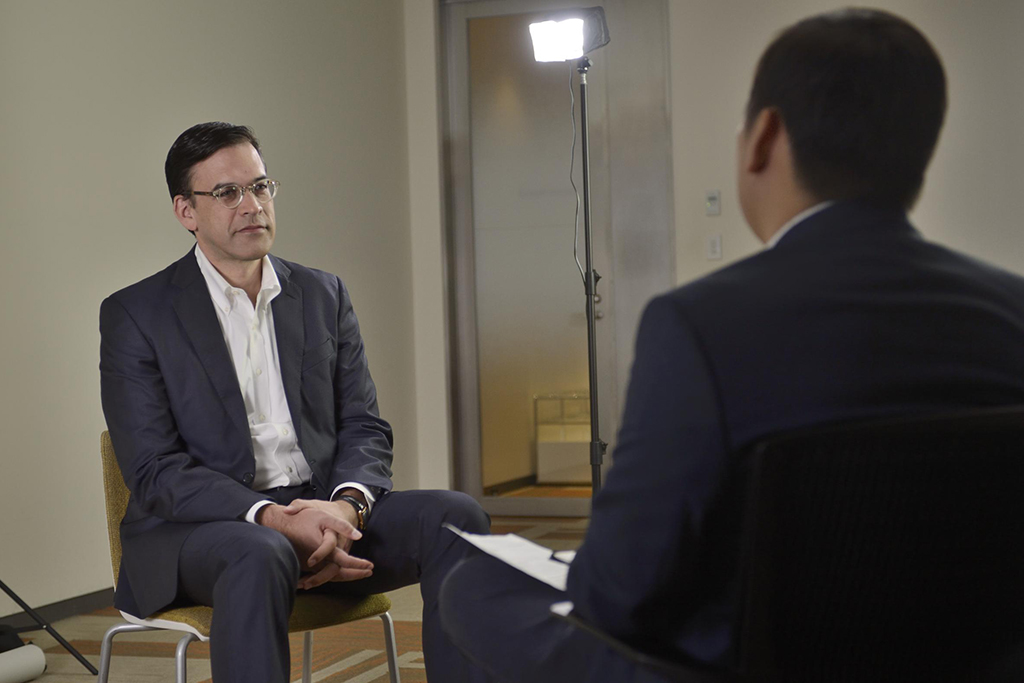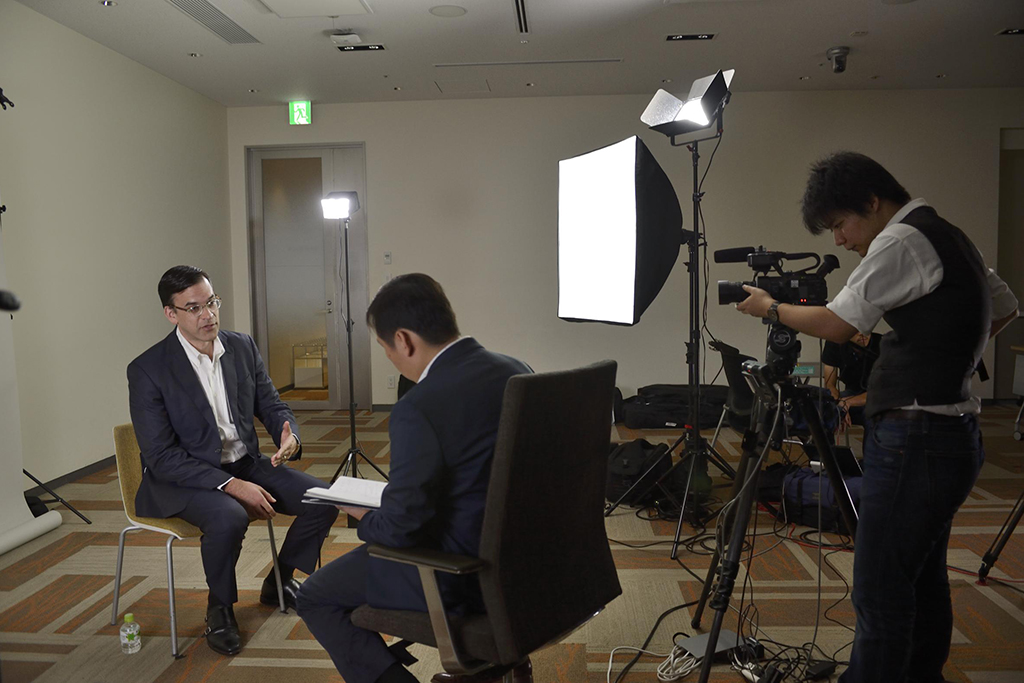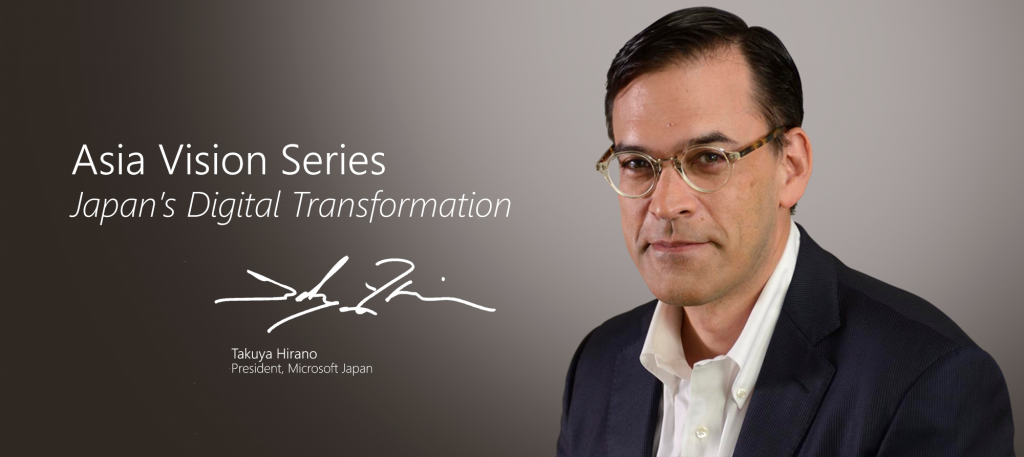
Digital transformation: The future after the lost decades
In our Asia Vision Series features, we dive into key industry trends and issues with our subject matter experts and visionaries across the region. In part 1 of 3 in this interview, Alfred Siew, a veteran journalist formerly with Singapore broadsheet The Straits Times and founding editor of a popular technology blog, speaks with Takuya Hirano, president of Microsoft Japan. They dive into issues affecting Japan’s digital transformation journey. On a personal level, Hirano also shares how his own sense of identity and global experiences have shaped his world view.
“Never trust e-mail. Print out the e-mail, fax it over, and if the message is important enough, make sure to call the customer.” These were memorable instructions from a supervisor to Takuya Hirano when he was working for a Japanese firm in Silicon Valley in the late 1990s. It was a lesson on the Japanese pursuit of perfection and customer service, though some could argue reflected a mindset loyal to tradition that remains today.
Fast forward to recent years, the use of fax is still prevalent in Japan – especially with the economy being driven by small and medium sized companies. According to Hirano, now president of Microsoft Japan, this dedication – or reluctance to depart from tradition – is what some critics believe has contributed to the nation’s productivity crisis. In fact, the Organisation for Economic Co-operation and Development (OECD) Compendium of Productivity Indicators 2015 ranked Japan 13th from the bottom when it came to labor productivity, or gross domestic product (GDP) per hour worked.
Hirano believes this challenge presents a growing urgency for Japanese businesses and organizations to embrace digital transformation – an opportunity to bounce back from the sluggish global economy and perhaps make up for lost ground from the lost decades. The last two decades have been economically painful for the country, not just in terms of stalled productivity growth, but also ceding its place as the region’s electronics giant to rivals such as those from South Korea and China.
No country is quite like Japan, says Hirano, who was born and raised in Hokkaido, in the north of of the country. Despite having worked in the United States, Europe and now back in Japan in his 11th year with Microsoft, he finds his home country unique in its approach to business. He believes Japan’s commitment to quality and customer satisfaction can be harnessed to boost its efforts at digital transformation after the lost decades.
Japan can lead once again in the digital economy precisely because it is no stranger to technology, Hirano argues. As consumers, the Japanese have always embraced innovations such as mobile technology, video games, and cloud services. Businesses, whether they are start-ups or large enterprises, can seize this opportunity, but they have to decide how to navigate between the analog and digital worlds.
“Nothing beats face-to-face, so we have to decide what we have to do – more analog or face-to-face versus what can be done or achieved through digital. If we have clarity in this, then there is no lack of trust or there is no disappointment from the customer. Rather, there is going to be more appreciation because there will be a greater speed in what we do,” he contends.
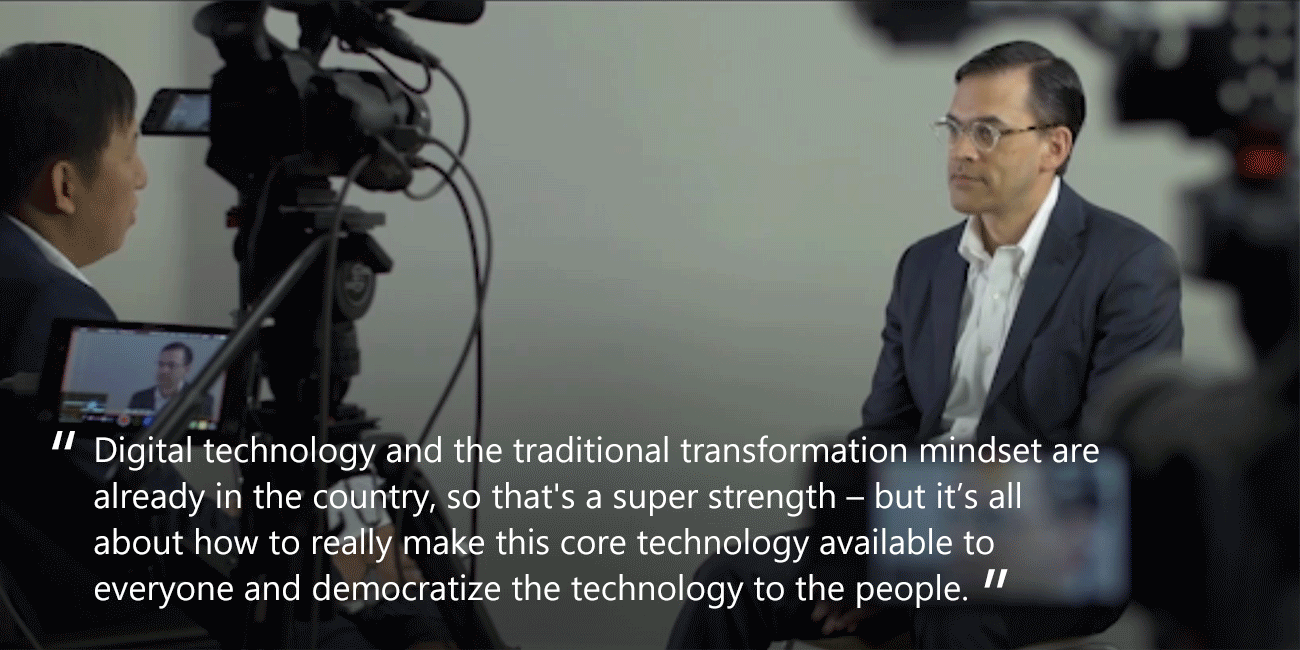
Digital technology and the traditional transformation mindset are already in the country, so that’s a super strength – but it’s all about how to really make this core technology available to everyone and democratize the technology to the people.
Hirano sees plenty other opportunities for the country to leap ahead, but they all have a common denominator of having to embrace new technologies. Whether it be mobile technologies for working remotely, or virtual reality which enables trainees to learn in a safe, simulated environment, Japanese companies can get ahead of the curve.
So how does a company succeed at digital transformation? Hirano outlines that there are four important elements they need to focus on: become more engaged with customers, empower employees, optimize business operations, and transform their products and services using digital content. These dimensions are not new, but what has evolved is the role that systems of intelligence now play, providing better insight from data and converting that into intelligent action, he explains.

The first pillar of digital transformation is to become more engaged with customers. This includes predicting what they want before they know they want it, based on data intelligence. Offer it to them in a way that’s natural, like having a conversation with a representative from a company, Hirano says.
The second pillar is empowering employees. Instead of asking around and hoping that a co-worker has an answer to your question, why not build an infrastructure where emails, documents and applications can be easily found? Analytics can help uncover information across an organization, and provide insight to what is going on, he said.
The third pillar involves optimizing business operations. It is not enough to know what is happening now in the business – but also to anticipate what will happen, and be prepared to act on that insight. This can be achieved through machine learning and the Internet of Things, which can leverage millions of data points from processes and sensors to recognize patterns and generate predictive insights.
The final pillar is to transform products and services companies based on data intelligence, to unlock new revenue streams and stay relevant to the market.
There is some grounding to Hirano’s optimism about Japan’s capacity for change. Throughout the past 50 years, the country has weathered much change – technological and otherwise. This has resulted in the need to adapt being embedded in the mindset of the people, he observes.
Companies know they have to deliver impact in other ways than exports in this increasingly mobile, cloud-enabled business world. And they can find a way to do this, without sacrificing their usual high standards. It all begins with seeking a balanced approach, Hirano affirms.
How are companies in Japan putting digital transformation on the business agenda? Hirano explains the changes in the country in the next instalment of this interview.
 Takuya Hirano
Takuya Hirano
President, Microsoft Japan
Takuya Hirano leads Microsoft Japan’s operations from Tokyo. He joined the company in 2005 as a senior director, and was in charge of developing its overall business growth plan. Hirano then moved to oversee all aspects of the business in the 25 countries under Microsoft’s Central & Eastern Europe organization from 2011 to 2014, before returning to Microsoft Japan. He has also spent several years of his professional life in Silicon Valley, California. Hirano was born in Hokkaido, Japan and holds a Bachelor’s Degree in International Relations from Brigham Young University.
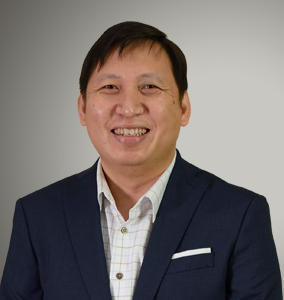 Alfred Siew
Alfred Siew
Alfred is a writer and speaker with close to 20 years of experience in journalism and communications in Singapore and Southeast Asia. Previously a technology correspondent with Singapore’s national broadsheet The Straits Times, he has covered the regional technology scene for over a decade. He now runs a popular technology blog – which is keenly followed by consumers, CEOs and government regulators alike, as well as his own editorial consultancy firm.





